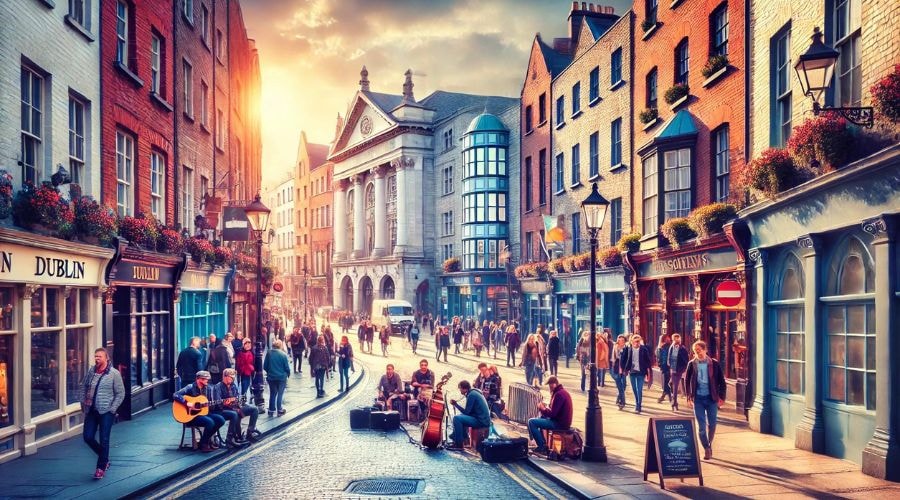
Three days in Dublin is a perfect start. It allows you to see the city centre's main attractions. You can visit Trinity College, the Guinness Storehouse, and Dublin Castle. Walk around Temple Bar and relax in Phoenix Park. You’ll get a taste of Dublin's rich culture and vibrant life.
When I visited Dublin, I spent three days there. It was just the right amount of time. I explored the city without feeling rushed. I even had time for a leisurely pint at a local pub.
How Many Days Should You Spend in Dublin?
Three to four days in Dublin are generally sufficient for exploring the major sights and soaking in the city's vibrant culture. This duration allows you to visit key attractions like the Guinness Storehouse, Trinity College, and the Book of Kells without feeling rushed. If you're interested in Dublin's famous pubs and night scenes, an extra day might enhance your experience, giving you leisure to wander through the charming streets and discover hidden gems. This time frame also offers the flexibility to include a day trip to nearby scenic spots like Howth or Bray.
Short Visit (1-2 Days)
For a short visit to Dublin, 1-2 days are perfectly sufficient. This duration lets you explore key attractions without feeling overwhelmed. In my experience, you can comfortably visit Dublin Castle, meander through the lively Temple Bar area, and savor a pint at an authentic Irish pub all in one day. With an extra day, consider exploring the historic grounds of Trinity College and viewing the famous Book of Kells. While a brief stay won't allow you to see everything, it definitely introduces the vibrant spirit of Dublin.
Here are some must-do activities for a 1-2 day visit:
-
Visit Dublin Castle, a historic site embedded with rich Irish heritage.
-
Stroll through Temple Bar, Dublin's cultural quarter known for its bustling nightlife.
-
Enjoy a traditional Irish pint at one of the local pubs.
-
Explore Trinity College and see the ancient Book of Kells, a stunningly illustrated manuscript.
Medium Stay (3-4 Days)
Spending 3-4 days in Dublin allows for a balanced exploration of its rich history, vibrant culture, and unique attractions. This duration is ideal to immerse yourself in the vibrant city side's atmosphere without feeling rushed. In my experience, this medium stay provides ample time to visit major landmarks and enjoy some local pubs and eateries at a leisurely pace.
During a 3-4 day visit, I found the first day perfect for acclimatizing to the city vibe and exploring the central historical sites. The following days allowed for deeper exploration, such as taking guided walking tours and visiting museums, which enriched my understanding of Dublin's heritage. Evenings were well-spent enjoying traditional Irish music in the Temple Bar area.
In this time frame, you can comfortably cover:
-
Day 1: Explore Dublin Castle and the surrounding area. Enjoy a walk through St. Stephen’s Green.
-
Day 2: Visit the Guinness Storehouse and learn about Ireland's most famous beverage. Later, stroll along the River Liffey and cross the Ha’penny Bridge.
-
Day 3: Spend the morning at the National Museum of Ireland and the afternoon shopping on Grafton Street.
-
Day 4 (optional): Take a day trip to the nearby historical sites like Howth or Malahide Castle.
Extended Stay (5+ Days)
If you have the luxury of time, spending more than five days in Dublin is a rewarding experience. This extended stay allows you to explore the city beyond its famous landmarks and delve into its local culture and hidden gems. From my own visits, spending longer in this Irish city has always given me a richer, more nuanced understanding of both its history and contemporary vibe. Wandering through the less touristy neighborhoods and finding small, cozy cafes where locals linger over coffee made these days unforgettable.
Additionally, an extended stay gives you the chance to visit Christ Church Cathedral, participate in local events and festivals, which are often missed by those on a shorter visit. Dublin is renowned for its literary festivals, food stalls, traditional Irish dinner experiences, live music, and vibrant St. Patrick's Day celebrations, each offering a unique glimpse into the city's soul. Don't miss tasting Irish whiskey at one of the local distilleries. These experiences have always deepened my connection to Dublin, turning simple sightseeing into memorable cultural immersion.
While in Dublin, consider a day trip to Ireland's west coast. The west coast is known for its breathtaking landscapes and charming towns. Exploring beyond the city will give you a fuller picture of Ireland’s natural beauty and cultural richness.
With more than five days, you can:
-
Take detailed tours of historic sites like Dublin Castle and Trinity College.
-
Explore the art and culture at the National Museum of Ireland and the Irish Museum of Modern Art.
-
Enjoy leisurely walks in Phoenix Park and along the Grand Canal.
-
Discover the unique shops and eateries in neighborhoods like Ranelagh and Rathmines.
-
Engage with Dublin’s vibrant theater scene with a play at the Abbey or the Gate Theatre.
-
Take day trips to nearby attractions such as Howth, Malahide Castle, or the Wicklow Mountains.
What Are Some Suggested Itineraries for Different Stays?
Planning the perfect Dublin itinerary requires considering both the duration of your stay and your personal interests. For a quick trip, focusing on Dublin's key attractions, one to two days is sufficient. This allows you to visit iconic sites like Trinity College and the Book of Kells, or enjoy a pint at the Guinness Storehouse.
If you can extend your visit to three to five days, you'll have the chance to explore Dublin's rich history and vibrant cultural scene more thoroughly. This period is ideal for visiting museums, taking leisurely walks through historical neighborhoods like Temple Bar, and experiencing the local food and music scene.
For those fortunate enough to spend a week or longer in Dublin, the city opens up even further. You can delve into lesser-known attractions, take multiple day trips to places like Howth and Bray, or even explore the ancient sites in the Boyne Valley. Longer stays allow for a relaxed pace to truly absorb the atmosphere and charm of the Irish capital. Each itinerary can be customized to balance historical tours, cultural explorations, and relaxed days enjoying Dublin's cafes and parks, ensuring a well-rounded and fulfilling visit.
1-Day Itinerary
A 1-Day Itinerary in Dublin packs the essentials to capture the city's vibrant culture and historical richness. On my last visit, I started my day with a hearty Irish breakfast near St. Stephen's Green, energizing myself for a busy day ahead. This experience allowed me to dive right into the local atmosphere, buzzing with early risers and the aroma of freshly brewed Irish coffee.
For a day trip, prioritize Dublin’s iconic landmarks. Begin with a guided tour of Trinity College, home to the Book of Kells, a stunning example of famous medieval manuscript craftsmanship. Walking through the college grounds, the sense of history is palpable, as if the old stone buildings whisper stories of the past. Next, head to the Guinness Storehouse; even if you're not a beer enthusiast, the rooftop bar offers panoramic views of the city that are not to be missed. I found myself lost in the skyline, tracing the spires and rooftops from this unique vantage point.
Cap off your day with a stroll through the historic Temple Bar area. The cobbled streets and lively pubs provide a perfect backdrop for enjoying some live Irish music. Grabbing a spot by the window in one of the pubs, I enjoyed the lively tunes that seem to capture the spirit of Dublin itself.
Here’s how you can make the most out of your day:
-
Start your morning with a visit to Trinity College, marveling at the historical Book of Kells.
-
Continue to the Guinness Storehouse, where you can ascend to the Gravity Bar for a spectacular city view.
-
Conclude your evening in the Temple Bar area, soaking in the vibrant atmosphere and enjoying live Irish music.
3-Day Itinerary
A 3-day itinerary in Dublin perfectly balances major attractions with hidden gems. When I first explored Dublin, I spent three days soaking in its vibrant culture and historic landscapes, an experience both enriching and memorable.
Start your adventure at the Guinness Storehouse; the rooftop bar offers a panoramic view of the city—a sight I always find breathtaking. Dedicate your first half hour this afternoon to wandering through the historic Dublin Castle and the adjacent Dublin Gardens, places where the past meets present.
On your second day, visit the famous Kilmainham Gaol to witness Ireland's poignant history. Later, explore the Temple Bar area. Its lively atmosphere at night is something I particularly enjoy, with live music and local pubs that showcase Dublin’s friendly spirit.
Reserve your last day for a leisurely stroll through Trinity College, home to the Book of Kells. Close your trip with a walk along the River Liffey, ending at the modern Docklands. This route always helps me reflect on the city’s dynamic blend of old and new.
Here are some things you can do in Dublin in 3 Days:
-
Visit the Guinness Storehouse and enjoy views from the Gravity Bar.
-
Explore Dublin Castle and the serene Dublin Gardens.
-
Tour the historic Kilmainham Gaol.
-
Experience the vibrant nightlife in Temple Bar.
-
Wander through Trinity College and see the Book of Kells.
-
Take a reflective walk from the River Liffey to the Docklands.
5-Day Itinerary
A five-day itinerary in Dublin ensures a comprehensive exploration of its rich history, vibrant culture, and bustling city life. During my last visit, I found that allocating five days allowed me to immerse fully in the local atmosphere without feeling rushed.
Begin with a day exploring historic Dublin Castle and the mesmerizing Book of Kells at Trinity College. Stroll through the quaint cobbled streets of Temple Bar. Reserve the second day for a deep dive into Ireland’s past at the National Museum of Ireland and enjoy an afternoon in the lush St Stephen’s Green.
I especially enjoyed dedicating my third day to discovering the Guinness Storehouse and Jameson Distillery. The insights into Ireland’s famed brewing and distilling traditions were captivating. On the fourth day, take a day trip to the Cliffs of Moher or the ancient ruins epic museum of Newgrange, both accessible and well worth the journey.
Conclude your visit with a relaxing day at Phoenix Park, one of the largest walled city parks in Europe, where I spent a peaceful afternoon spotting wild deer and visiting the Victorian tea rooms. This blend of activities captures Dublin's essence from multiple angles, offering a rich and memorable experience.
Suggested 5-Day Itinerary:
-
Day 1: Dublin Castle, Book of Kells at Trinity College, explore Temple Bar.
-
Day 2: National Museum of Ireland, afternoon in St Stephen’s Green.
-
Day 3: Guinness Storehouse, Jameson Distillery tour.
-
Day 4: Day trip to Cliffs of Moher or Newgrange.
-
Day 5: Phoenix Park, spot wild deer, visit Victorian tea rooms.
What is the Best Time To Visit Dublin?
You should visit Dublin in the late spring to early fall, particularly from May to September. During this period, the weather is mild and pleasant, making it ideal for outdoor activities and sightseeing. Dublin's vibrant atmosphere comes alive with numerous festivals and events, such as the Bloomsday Festival in June and the Dublin Fringe Festival in September. On my trips to Dublin, I found that these months offered the perfect balance of comfortable temperatures and cultural experiences. Here’s a guide to help you plan your visit to Dublin, ensuring you make the most of your time in this charming city.
Best Places to Stay in Dublin
Dublin, a city rich in history and culture, offers visitors an array of experiences, from bustling nightlife to serene parks. Determining how many days to spend in Dublin also involves selecting the right neighborhood to enhance your visit. Whether you're interested in soaking up the lively local atmosphere or enjoying quiet moments in lush green spaces, Dublin has a spot that suits every preference.
The city is divided into distinct neighborhoods, each with its unique charm and attractions. Choosing where to stay can significantly influence your Dublin experience, as each area of new city offers different amenities and vibes. From the historical echoes of the city center to the modern stretches of the Docklands, Dublin accommodates all types of travelers.
Temple Bar
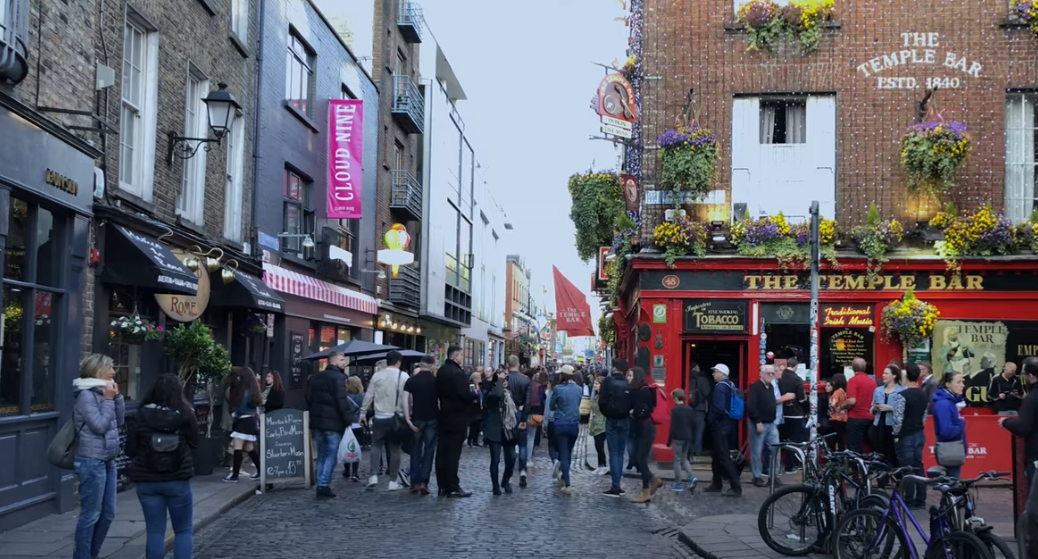
Temple Bar is synonymous with Dublin’s cultural pulse. This area is not only packed with art galleries, cultural institutions, and traditional Irish pubs, but also hosts the famous Temple Bar Food Market every Saturday. Known for its vibrant nightlife, the Temple Bar district lights up with live music and bustling crowds every night, making it the epicenter of Dublin's social scene. It’s particularly appealing for those who are in the city for a few days and want to be at the center of the action. However, it can be quite noisy at night, so it’s ideal for those who don’t mind the lively evening buzz.
St. Stephen's Green
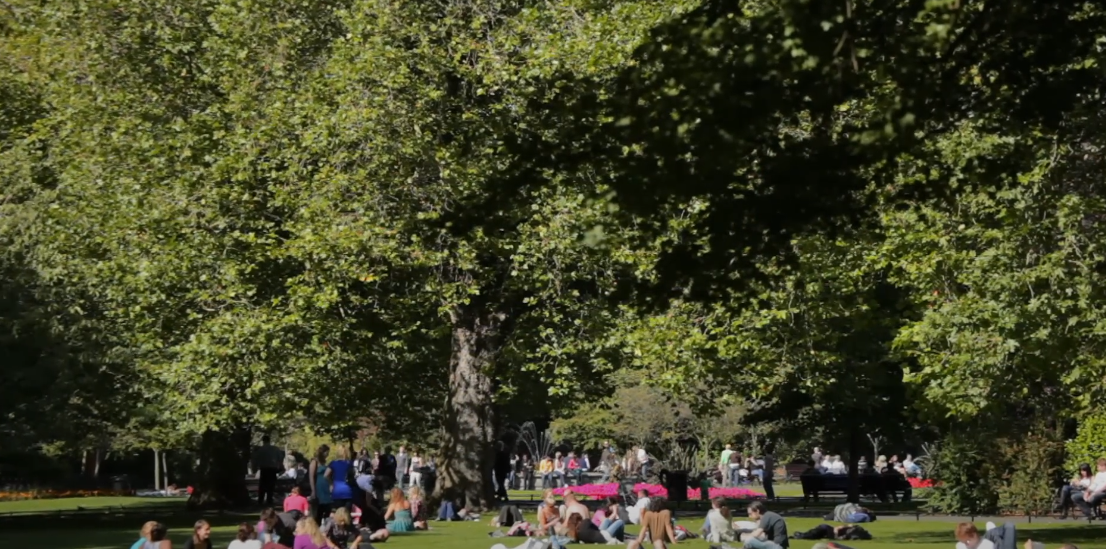
St. Stephen’s Green area is centered around a historic park that dates back to Victorian times, offering a tranquil escape with over 9 hectares of landscaped lawns and ornamental lakes. Nearby, you’ll find the Grafton Street shopping district, Dublin’s premier shopping haven. The neighborhood provides a quiet, upscale environment, making it suitable for travelers who prefer a more laid-back and refined visit, yet still want to stay close to central Dublin. Its proximity to major museums and theaters also makes it a cultural hub.
The Docklands
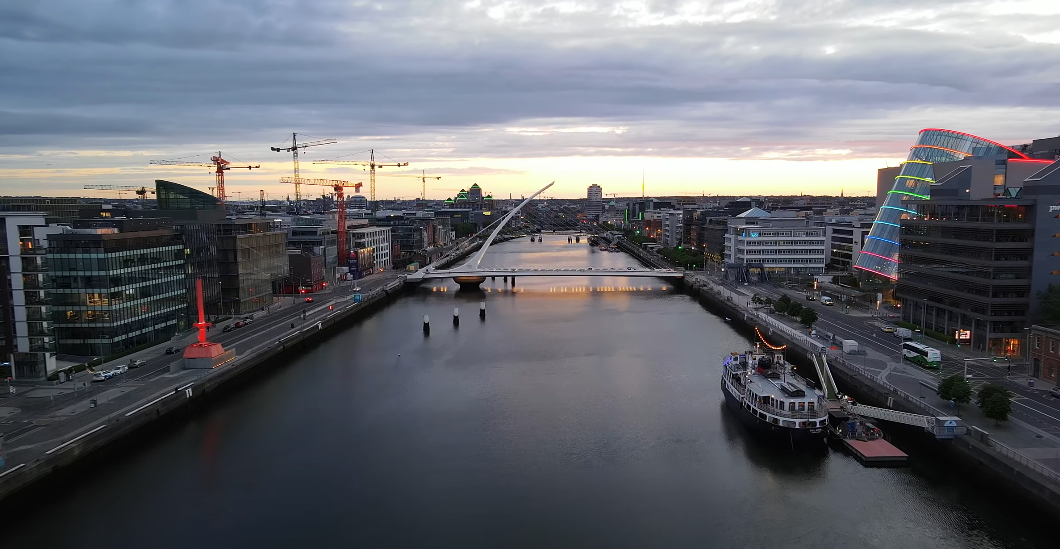
Once a derelict industrial area, The Docklands has been transformed into a thriving business quarter often referred to as “Silicon Docks” due to its concentration of tech companies like Google and Facebook. This area is ideal for those interested in technology and modern architecture, featuring cutting-edge businesses and sleek apartment buildings. It’s a fantastic spot for professionals on work trips or anyone curious about Ireland’s contemporary developments. The waterfront adds a scenic touch, perfect for evening walks along the revitalized quays.
Ballsbridge
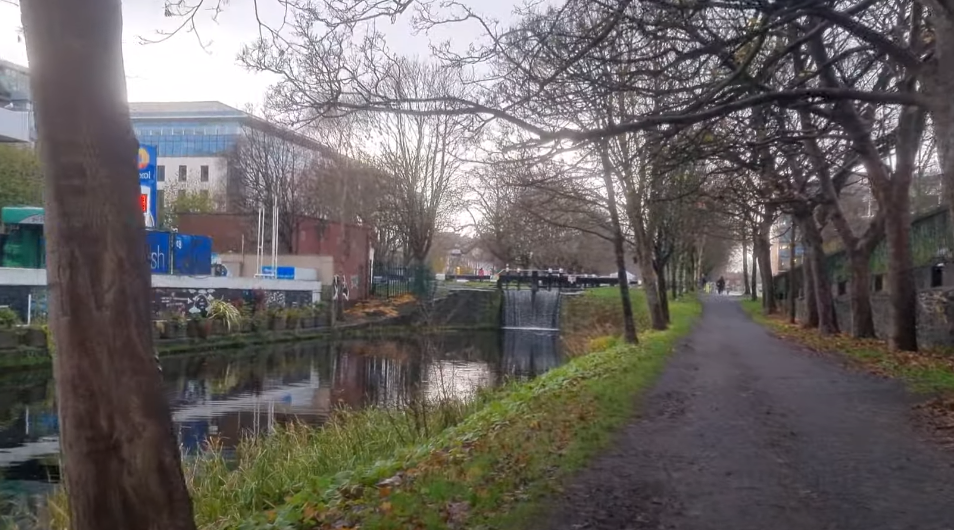
Ballsbridge is one of Dublin’s most exclusive suburbs, known for its grandeur and leafy avenues. Home to the Royal Dublin Society (RDS), which hosts exhibitions and sporting events, and Aviva Stadium, a key venue for international rugby and soccer matches, it's a culturally significant area. For visitors planning a longer stay, Ballsbridge offers a peaceful yet connected environment, with easy access to both the city center and natural attractions like Herbert Park. Its quiet, residential feel, combined with high-end dining options and boutiques, makes it ideal for families and those seeking a restful visit.
Essential Packing Tips for Dublin
You should pack versatile layers, comfortable walking shoes, and weather-resistant outerwear for your first trip to Dublin. Dublin's weather can be unpredictable, so it's essential to be prepared for sudden changes. During my visit, I found that having a lightweight, waterproof jacket and an umbrella were invaluable for dealing with unexpected rain showers. Here are some essential packing tips to ensure you're well-prepared for your Dublin adventure:
Layering Essentials
-
T-Shirts and Long-Sleeve Shirts: Ideal for layering and adjusting to varying temperatures.
-
Sweaters and Cardigans: Great for adding warmth on cooler days and evenings.
Outerwear
-
Waterproof Jacket: A must-have for staying dry during sudden rain showers.
-
Warm Coat: Necessary for colder months, especially from late autumn to early spring.
Footwear
-
Comfortable Walking Shoes: Essential for exploring Dublin's cobblestone streets and historic sites.
-
Waterproof Boots: Useful for rainy days and outdoor excursions.
Accessories
-
Umbrella: Compact and sturdy to handle the frequent rain.
-
Scarf, Hat, and Gloves: Important for staying warm during the cooler months.
-
Sunglasses: Handy for sunny days and reducing glare.
Miscellaneous
-
Travel Adapter: Necessary for charging electronic devices.
-
Reusable Water Bottle: Convenient for staying hydrated while exploring the city.
Tips for Visiting Dublin
Deciding how many days to spend in Dublin requires careful consideration of your travel itinerary and what you wish to experience in the city. Dublin, although not overly large, is packed with historical sites, cultural activities, and unique neighborhoods, each offering a different flavor of Irish life. Planning for an adequate number of days ensures you can enjoy these experiences without feeling rushed. A balanced trip could include major attractions and hidden gems, giving you a full taste of Dublin's vibrant life.
Tips for Visiting Dublin:
-
Prioritize the must-see attractions: Spend at least one day visiting Dublin's iconic sites such as the Guinness Storehouse, where you can learn about the brewing process and taste a fresh pint; Dublin Castle, which offers insights into Irish history; and Trinity College, home to the Book of Kells. These locations are not only rich in history but also centrally located, making them easily accessible.
-
Utilize public transportation: Dublin's bus and tram systems are efficient and cost-effective. The Leap Card is a reusable travel card that offers discounted rates across multiple modes of transport, helping you navigate the city easily and affordably. This can be particularly useful for reaching more distant attractions like the Kilmainham Gaol, a historic prison that now serves as a museum.
-
Explore beyond the city center: Dedicate a day to visit coastal towns such as Howth and Malahide. Just a short train ride from Dublin, Howth offers beautiful cliff walks and seafood dining, while Malahide boasts a picturesque village atmosphere and a historic castle set in extensive gardens.
-
Consider guided tours: For those interested in history and anecdotes that are not commonly found in guidebooks, a guided walking tour can be invaluable. These tours often explore themes like Dublin's literary heritage or even its famous pubs, providing context and depth to your visit.
-
Check local event calendars: Dublin hosts various cultural and artistic festivals throughout the year. Timing your visit to coincide with events such as Bloomsday or the Dublin Theatre Festival can enhance your experience with unique performances and street activities.
Reflecting on your stay in Dublin can help gauge the ideal length for future visits. Typically, three to four days allow a comprehensive exploration of both the famed and the lesser-known aspects of Dublin, offering a satisfying mix of sightseeing, leisure, and cultural immersion. For instance, those who enjoy museums might spend an extra day visiting the National Museum of Ireland or the Modern Art Museum, while someone fascinated by literary history might add time to explore the James Joyce Centre and other literary landmarks. Adjusting your duration based on personal interests and pace is key to a fulfilling experience.
FAQs On How Many Days in Dublin
1. How many days in Dublin are enough?
Three days in Dublin are enough to experience the city's highlights. You can explore iconic landmarks like Trinity College, the Guinness Storehouse, and Dublin Castle. This duration allows you to wander through Temple Bar, enjoy its vibrant nightlife, and take a scenic stroll in Phoenix Park.
2. What are the must-see attractions in Dublin?
Must-see attractions in Dublin include Trinity College and the Book of Kells, the Guinness Storehouse, Dublin Castle, St. Patrick's Cathedral, and the National Museum of Ireland. Don't miss the lively atmosphere delicious restaurants of Temple Bar and the scenic beauty of Phoenix Park.
3. Is public transportation easy to use in Dublin?
Public transportation in Dublin is convenient and efficient. The city offers buses, trams (Luas), and trains (DART). Purchasing a Leap Card makes it easy to travel across different modes of transport.
4. When is the best time to visit Dublin?
The best time to visit Dublin is during late spring (May to June) or early fall (September to October). The weather is mild, and there are fewer tourists compared to the peak summer season. These months also offer numerous festivals and events.
5. What local foods should I try in Dublin?
In Dublin, try traditional Irish dishes like Irish stew, boxty, and coddle. Enjoy seafood specialties such as Dublin Bay prawns and smoked salmon. Don't miss out on sampling local cheeses and indulging in a full Irish breakfast. For a sweet treat, try a slice of barmbrack or a warm scone with jam and cream.
